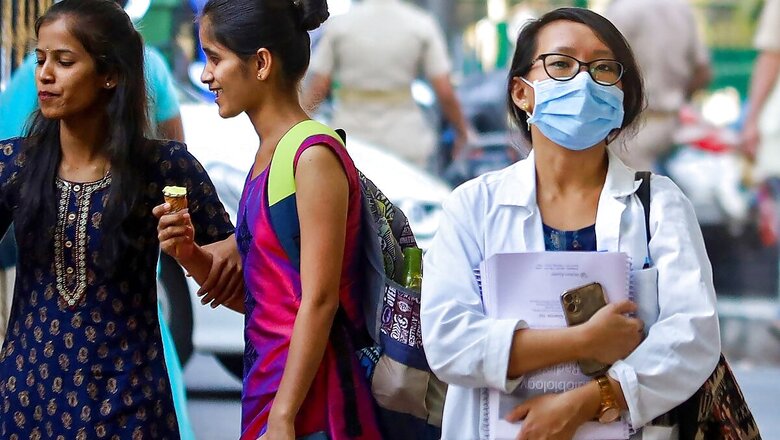
views
The “cocktail of viruses” in the air, which has increased infection from H3N2, Type B influenza, adenovirus and Covid-19, is not alarming but a usual trend, the chief of ICMR-run National Influenza Centre (NIC) has told News18.com.
NIC is part of the National Institute of Virology (NIV) in Pune, which is a virology research institute and run by the Indian Council of Medical Research (ICMR).
Doctors across India, for the last two to three months, have been observing higher cases of flu-like illnesses with a slightly increased severity and some cases requiring hospitalisation too. So far, two deaths have also been reported, each in Karnataka and Haryana.
In an exclusive interview with News18.com, Varsha Potdar, head of NIC, said it is a “usual phenomenon”. “These are seasonal influenza viruses. One or two viruses co-circulate with one virus predominant in the season,” she said.

“From August to October, H1N1 was predominant, whereas, from November, H3N2 starts dominating. Now, type B virus is also in circulation along with H3N2,” she said.
She further said these are the “same seasonal viruses”, which are circulating worldwide at this time.
“Influenza viruses are constantly evolving through drift phenomenon leading to mutations. This is why every year the vaccine gets updated for circulating strains. The current circulating strains are similar to the Northern Hemisphere vaccine component for H3N2,” she added.
India falls under the Northern Hemisphere and there are common virus strains that circulate in the entire hemisphere.
Adenovirus Circulation Not ‘Bad’
Potdar, who heads the influenza division under NIV, said the adenovirus circulation is “not bad” and “around 6% positivity was observed for adenovirus which is common for many respiratory viruses”.
The positivity rate means that out of every 100 tests, 6 tested positive for adenovirus presence.
“The NIC receives samples from various sources. These include references for Covid-19 and research studies such as influenza-like illnesses (ILI)/ severe acute respiratory infection (SARI) surveillance in the Pune area,” she pointed out.
She stressed that the “6% positivity for adenovirus is not high or alarming and it is common for many respiratory viruses.” However, she clarified that the sample tested at NIC may not represent the country-wise trend but only the region-based trend.
Flu Shot a Good Idea
An expert in influenza and other respiratory virus infections, Potdar said the influenza vaccine has a moderate immunity for about eight to nine months.
“Every year the vaccine gets updated as per circulating strains,” she said, while adding that the northern and southern hemisphere vaccines are available for use for high-risk groups and healthcare workers. Ideally, the vaccines should be taken as they are effective, she stressed.
“These are respiratory viruses, and appropriate hand hygiene, Covid-19 appropriate behaviour, use of masks, and social distancing will be able to prevent these infections,” she added.
Read all the Latest India News here




















Comments
0 comment